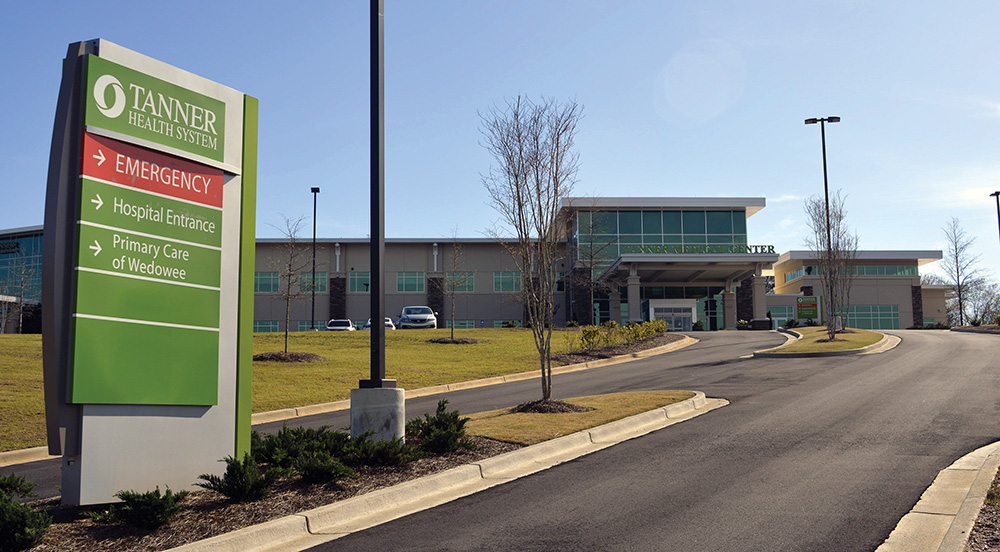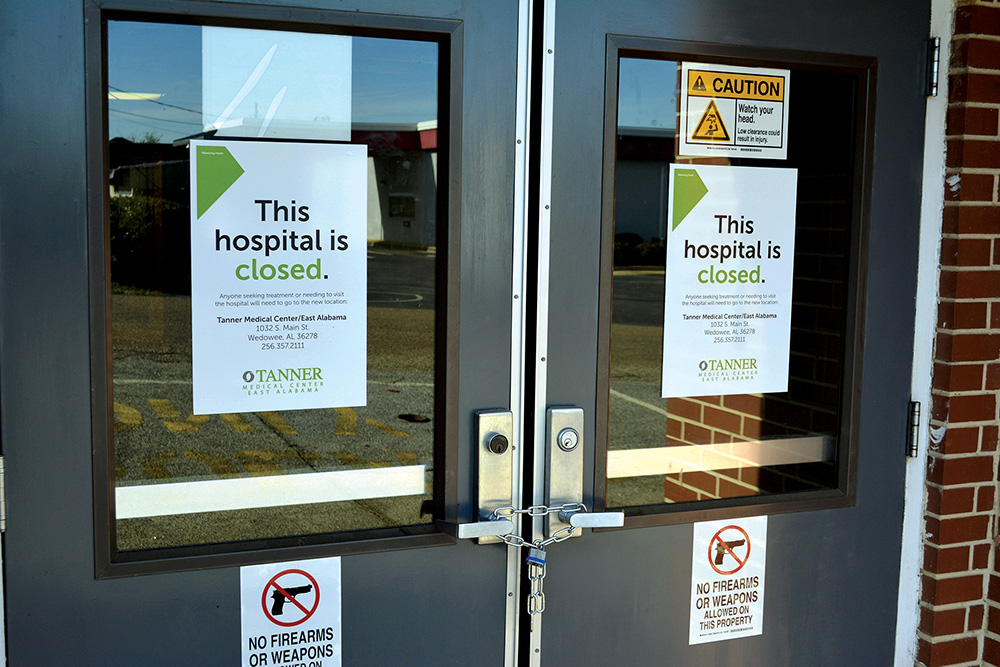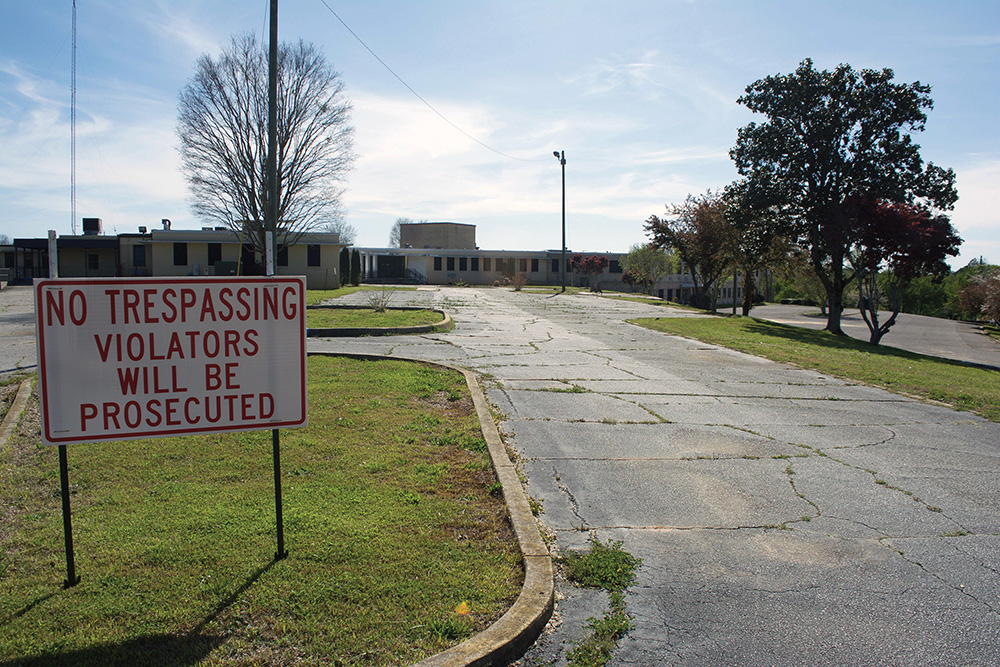
While rural hospitals face numerous financial challenges, hope is not lost. Many areas in Alabama are finding partnerships and tax revenue to maintain their level of health care
By M.J. Ellington
When people in rural Randolph County faced the prospect of life without a nearby hospital or else raising taxes, voters in Roanoke, Wedowee and surrounding areas approved a 1 percent sales tax increase in 2015. Two years later, people in the small East Alabama county celebrated the opening of shiny new Tanner Medical Center/East Alabama. Tanner Medical Services, a Georgia not-for-profit hospital management company, operates the facility.
Randolph’s vote came following the 2011 closing of Randolph County Hospital in Roanoke and the pending loss of nearby Wedowee Hospital, both due to financial problems and aging structures. The county is hardly alone with its hospital financial challenges.
Part of the reason rural Alabama hospitals face such challenges is because the state has not expanded Medicaid, said Dr. Marsha Raulerson, a semi-retired Brewton pediatrician and past president of the Medical Association of the State of Alabama. “People think Medicaid is a welfare program; it is so much more,” she says. “If people just knew, it affects all of us.”
Now 76, Raulerson said at age 39, she came “kicking and screaming” to Brewton with her nephrologist husband who was recruited out of the University of Florida to open the first dialysis program between Mobile and Dothan.
She had planned to spend the rest of her life teaching at the University of Florida’s medical school, but once she got used to life in a town of 5,400 people, she realized it provides a good quality of life and a great place for children to grow up. Having access to good health care nearby is an important factor, but Raulerson said this year, she is concerned.
“For the first time, our hospital is in the red,” Raulerson says. “There are so many people who are uninsured, who cannot pay. Insurance and Medicare have lower payments to rural hospitals. Expanded Medicaid would help with this.”
A ‘trifecta of challenges’
Dr. Don Williamson, Alabama Hospital Association executive director and former state health officer, said rural hospitals face a “trifecta of challenges” as they seek to shore up financially ailing hospitals. Those challenges include:
• Alabama’s decision not to expand Medicaid left a large number of people without health coverage to pay for needed care.
• Federal Medicare and payments to health providers are lower for small hospitals than the biggest hospitals, based on a federal formula that mandates larger reimbursements for the largest hospitals. The federal wage index that helps determine how much health providers get paid in every state lists Alabama at the bottom.
• Alabama is the only state in the country that does not pay any of the state’s matching share required to bring in federal revenue for Medicaid programs. Of every dollar spent on the program, the federal government pays 70 cents while Alabama’s share to bring in the federal funds is 30 cents. But unlike other states, Alabama’s share comes from a voluntary tax hospitals pay to tap the federal revenue.
Hospital Association figures show that 86 percent of rural hospitals are operating in the red as compared to 69 percent of all hospitals having a negative operating margin, says Rosemary Blackmon, vice president of communications. Hospitals with other sources of revenue, such as taxes or other services, may be able to shore up the bottom line.
“Right now, when a rural hospital is in trouble, a county tries to rally by raising taxes,” Williamson says. “What if that money went to Medicaid? We could bring in 10 times as much federal revenue. It probably would have been cheaper.”

But rural counties like Randolph have done a remarkable job working to save rural hospitals, Williamson says. In recent years, several other small Alabama cities faced with losing their local hospital found partnerships and tax revenue to help pay for new facilities.
The impact of hospitals on the life of rural communities helps cities and counties keep them viable. Blackmon said the annual payroll of rural hospitals is $552 million, and 44 percent of total employment in rural counties can be attributed to health care.
Pell City in St. Clair County and Clanton in Chilton County established partnerships with St. Vincent’s Health Care to open new, smaller hospitals in their towns. Williamson said Haleyville in Winston County wants a local tax to help with operating costs at Lakeland Community Hospital.
Three other rural hospitals – John Paul Jones Hospital in Camden, Bryan W. Whitfield Memorial Hospital in Demopolis and J.V. Stabler Memorial Hospital in Greenville – became part of the UAB Health System in February. UAB’s financial and managerial expertise, hospital compliance training and clinical resources are part of the package.
In March, the state Legislature approved a bill to create a resource center housed at UAB to provide support for nonprofit, rural, public hospitals in the state that are facing economic pressures. It would assist these hospitals in areas including purchasing and supply chain, strategic planning, insurance and cost reporting, coding, recruitment and compliance.
While the bill passed, it has not been funded. The UAB Health System will work to determine interim funding prior to the 2019 legislative session to start providing support to eligible hospitals.
Hospitals that can backfill with taxes or other sources of revenue have more ways to supplement the income they get through Medicare, Medicaid and private insurance reimbursement.
Rural areas need new ideas
In rural areas, the population tends to be older, poorer and less likely to have insurance to pay for hospital and other health care costs. One wrinkle in the uninsured population is that Medicare, Medicaid and private health insurance companies negotiate the rates they will pay for a patient’s care. People without insurance coverage pay the highest rate because there is no company that is negotiating rates on their behalf. As a result, uninsured people in rural areas may not seek medical care until a problem is harder to deal with, and when they do, the cost for their care may be higher than what people with insurance pay.
Ready access to good health care becomes everyone’s problem when the local hospital and healthcare delivery system are at risk, a point at which rural communities should approach the issue with new ideas, says Dale Quinney, longtime executive director of the Alabama Rural Health Association.
Quinney says when the healthcare delivery system begins to fail, particularly if the future of the local hospital is uncertain, it’s time to get creative with solutions. “Without a hospital, the economic base fails,” he says.
He wants a greater role for allied health professionals, nurse practitioners and physicians assistants, and telehealth that enables doctors at remote locations to visit patients in rural areas using computer and electronic devices. He’d like to see more hospitals have a small number of inpatient beds and the ability to have alternate ways to generate operating revenue.
Quinney is excited about the possibilities of “telehealth carts” that help patients in rural areas consult with doctors in other cities using electronic and computer technology.
Michael Smith directs the telehealth cart program at the Alabama Department of Public Health. Smith said the department expects to have telehealth cart programs available at 60 county health department offices around the state this year.ν
M.J. Ellington is a Montgomery freelance journalist whose longtime health and state government reporting and editing career included the Montgomery Advertiser, The Decatur Daily, Florence Times-Daily and The Anniston Star. Contact her at ellingtonmj15@gmail.com.






